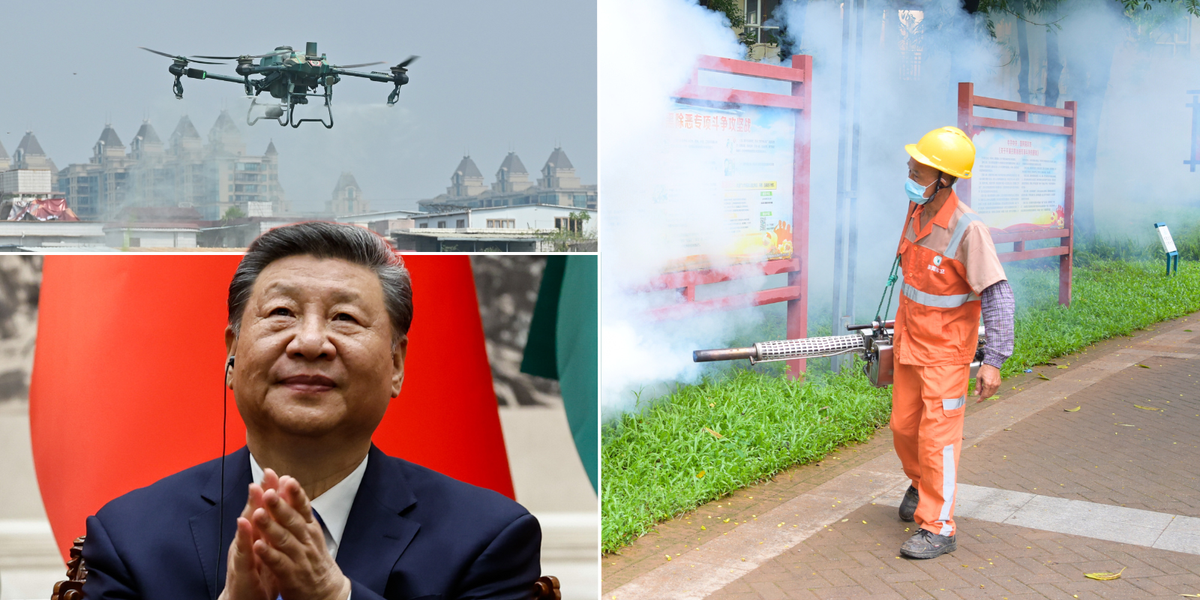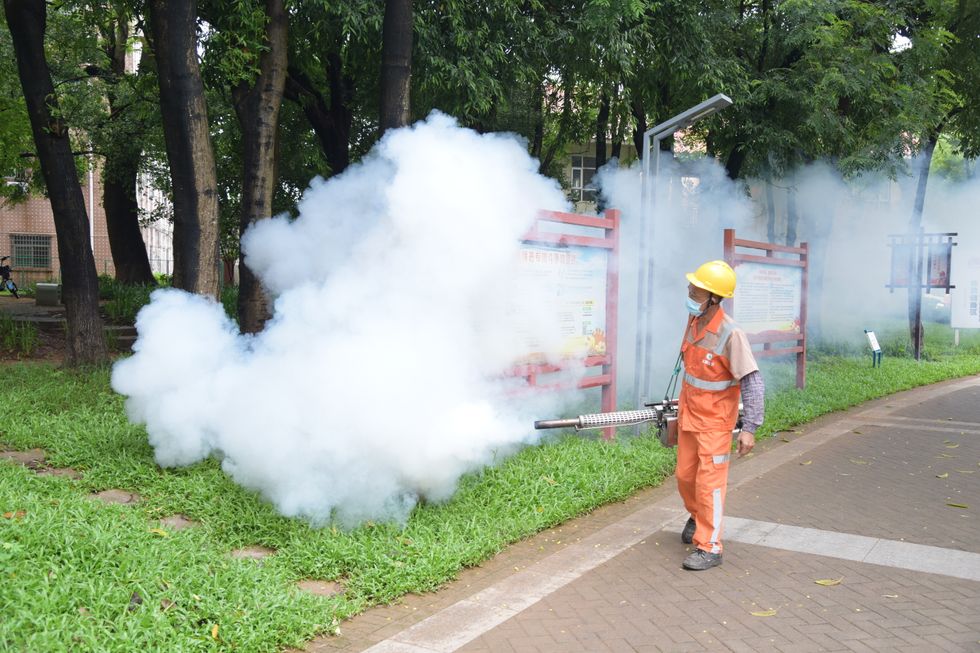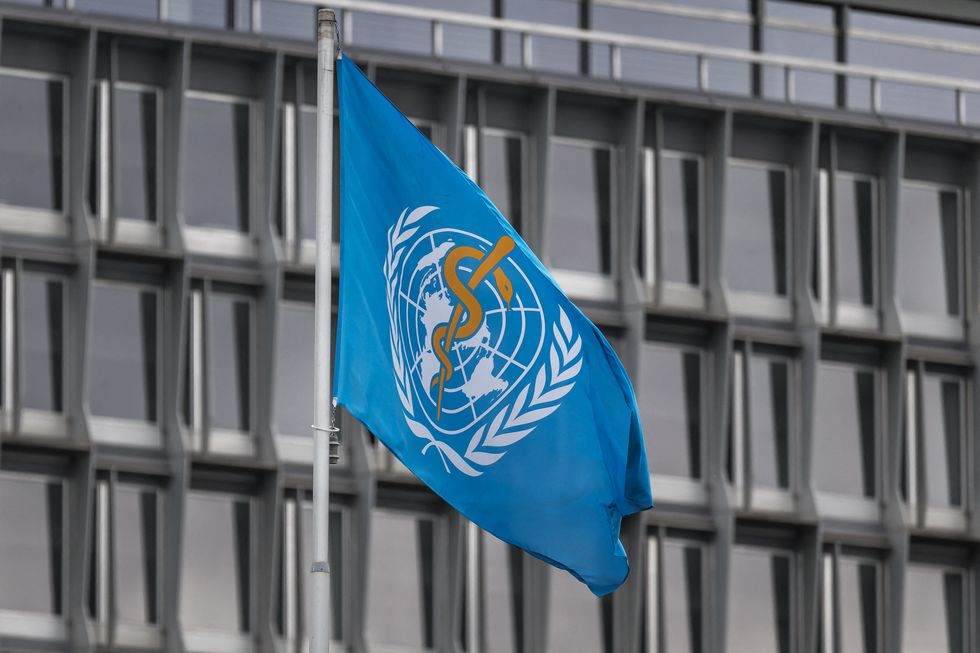



China has brought in isolation rules for patients infected with chikungunya virus as a major outbreak spreads across the country's Guangdong province.
Some 10,000 people have been infected by the mosquito-borne virus - with infected people now forced to stay in hospital for seven days or until testing negative, whichever comes first.
Foshan city has recorded more than 7,000 infections, while 12 additional cities in Guangdong have seen outbreaks.
Approximately 3,000 new infections emerged within the past week alone, with China forced to bring back pandemic-era restrictions as a result.

GETTY
|PICTURED: A drone sprays insecticide on plants in China amid the chikungunya virus outbreak
Health officials are instructing anyone experiencing fever, joint discomfort or skin rashes to seek immediate hospital testing.
The United States Centers for Disease Control and Prevention has elevated its travel guidance to Level 2 for Guangdong Province, advising American visitors to exercise heightened caution.
Travellers are recommended to apply insect repellent, wear protective clothing covering their arms and legs, and select accommodation with air conditioning or mosquito screening.
The CDC has also identified elevated risk areas including Brazil, Colombia, India, Mexico, Nigeria, Pakistan, the Philippines, Thailand and China.
While Dr Diana Rojas Alvarez from the World Health Organization said the current spread is similar to an epidemic between 2004 and 2005 which infected nearly 500,000 people across Africa, Asia and the Americas.
"We are seeing history repeating itself," she warned.

GETTY
|Health workers have been seen fumigating public spaces in a bid to stop the spread
The chikungunya outbreak extends far beyond China's borders, with approximately 240,000 infections and 90 fatalities documented across 16 countries as of the start of August.
Already, major outbreaks have struck Mauritius and French territories Reunionand Mayotte in the Indian Ocean, while cases have surged in Madagascar, Somalia, Kenya and India.
The virus has also spread to the South Pacific, including Samoa, Tonga, French Polynesia, Fiji and Kiribati.
Hong Kong confirmed its first infection this week: a 12-year-old who had travelled to Foshan in July.
China has deployed thousands of mosquito-eating fish into Foshan's waterways and launched aerial drones to identify pools of standing water where disease-carrying insects breed.
Residents face fines of up to 10,000 yuan (£1,100) for failing to eliminate stagnant water from household items including plant containers, coffee makers and empty bottles.
 GETTY |
GETTY |
The World Health Organization has warned that 'we are seeing history repeating itself'
Authorities have said their response has been a "decisive and forceful" bid to halt the disease's spread.
Their strategy includes releasing "elephant mosquitoes" capable of consuming the smaller Aedes species which spreads chikungunya.
Foshan's initial rules that visitors must complete 14-day home isolation periods have been rescinded, however.
Meanwhile, two vaccines have become available for travellers visiting regions affected by chikungunya outbreaks.
The US's FDA authorised IXCHIQ in late 2023 for adults over 18, followed by VIMKUNYA in February 2025 for individuals aged 12 and above.
Both immunisations are designated for non-routine use, specifically recommended for travellers to outbreak zones and laboratory personnel facing exposure risks.
